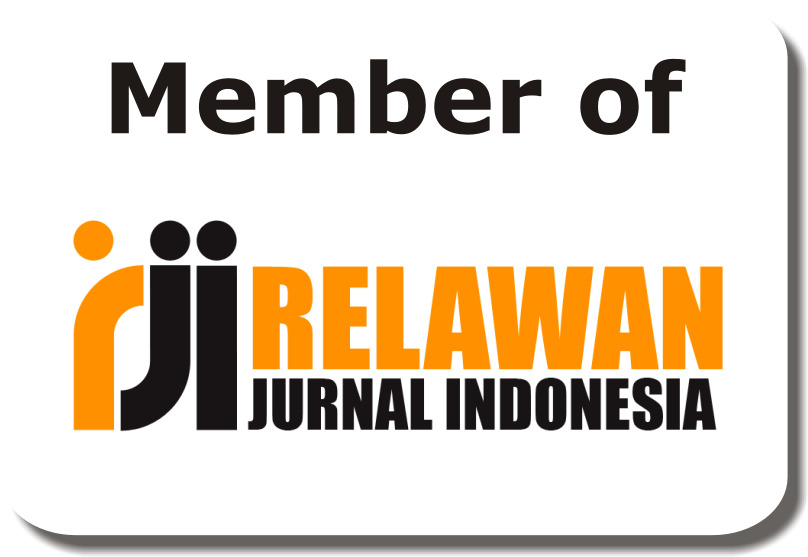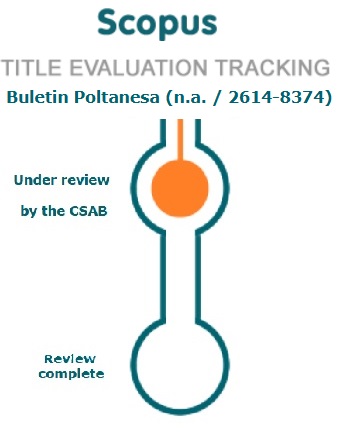The Students’ Perception on the Implementation of Computational Thinking in Maritime English Reading Comprehension
DOI:
https://doi.org/10.51967/tanesa.v26i1.3287Keywords:
Computational Thinking, Maritime English, Reading Comprehension, Students’ PerceptionAbstract
The implementation of Computational Thinking (CT) in language instruction has drawn interest due to its potential in improving students' analytical and problem-solving abilities. However, its uses in specific fields, such Maritime English especially in reading comprehension, is still not well established. This study is a qualitative study that aims to explore how students perceive the use of CT in Maritime English reading instruction. 31 Students from a maritime higher education institution participated in semi-structured interviews. The result indicates that students view CT as a useful technique for enhancing reading comprehension and engagement. Moreover, the perception is divided into abstraction, algorithm, decomposition, evaluation and pattern recognition. In terms of abstraction, students claim that they can ignore irrelevant information and pick relevant information. In terms of algorithm, students believe that they can apply strategies in reading to make a better comprehension such as underline keywords. In terms of decomposition, students feel confident in breaking down long and complex sentences to find the meaning. In terms of evaluation, students can evaluate the information in the text. In terms of pattern recognition, students are aware of common pattern/sentence structure and organization in the text. The study emphasizes the value of contextualized CT education and offers suggestions for integrating CT into Maritime English learning reading instruction. The finding of this study offers potential instructional strategies for maritime education.
References
Amalia, P. A., Adham, M., & Bhakti, S. (2022). Learners’ Perception Towards Online Classroom Environment during Pandemic of COVID-19, TPACK in EFL Context. Atlantis Press, 647, 7–13.
Amalia, P. A., Adham, M., & Rusman. (2020). Metode Pengajaran Bahasa Inggris Maritim. Isas Publishing, 6(2), 456–463.
Amalia, P. A., Kurniawan, A., Fahmimroah, F., & Arditiya, A. (2024). Computational Thinking in Developing Students’ Reading Comprehension Skill. Buletin Poltanesa, 25(2), 202–207. https://doi.org/10.51967/tanesa.v25i2.3204
Andrian, R., & Hikmawan, R. (2021). The Importance of Computational Thinking to Train Structured Thinking in Problem Solving. Jurnal Online Informatika, 6(1), 113–117. https://doi.org/10.15575/join.v6i1.677
Astuti, S. P. (2013). Strategies in an Indonesian high school teachers’ and students’ perceptions of motivational teaching context. TEFLIN Journal, 24(1), 14–31. http://journal.teflin.org/index.php/journal/article/view/152/141
Azizah, N. I., Roza, Y., & Maimunah, M. (2022). Computational thinking process of high school students in solving sequences and series problems. Jurnal Analisa, 8(1), 21–35. https://doi.org/10.15575/ja.v8i1.17917
Beek, ter M., Opdenakker, M. C., Spijkerboer, A. W., Brummer, L., Ozinga, H. W., & Strijbos, J. W. (2019). Scaffolding expository history text reading: Effects on adolescents’ comprehension, self-regulation, and motivation. Learning and Individual Differences, 74. https://doi.org/10.1016/j.lindif.2019.06.003
Duke, N. K., Ward, A. E., & Pearson, P. D. (2021). The Science of Reading Comprehension Instruction. The Reading Teacher, 74(6), 663–672. https://doi.org/10.1002/trtr.1993
Hingstman, M., Warrens, M. J., Doolaard, S., & Bosker, R. J. (2023). The effects of Success for All in the Netherlands on the reading achievement of first-grade students at risk of reading problems. Studies in Educational Evaluation, 77, 101257. https://doi.org/10.1016/j.stueduc.2023.101257
Jacob, S. R., Nguyen, H., Tofel-Grehl, C., Richardson, D. J., & Warschauer, M. (2018). Teaching Computational Thinking to English Learners. NYS TESOL Journal , 5(2), 1–13. https://www.researchgate.net/publication/331844224
Jacob, S. R., & Warschauer, M. (2018). Computational Thinking and Literacy. Journal of Computer Science Integration, 1(1). https://doi.org/10.26716/jcsi.2018.01.1.1
Jago, L. S., Monaghan, P., Alcock, K., & Cain, K. (2025a). The effect of preschool vocabulary and grammar on early reading comprehension and word reading: A systematic review and meta-analysis. Educational Research Review, 47, 100680. https://doi.org/10.1016/j.edurev.2025.100680
Jago, L. S., Monaghan, P., Alcock, K., & Cain, K. (2025b). The effect of preschool vocabulary and grammar on early reading comprehension and word reading: A systematic review and meta-analysis. Educational Research Review, 47, 100680. https://doi.org/10.1016/j.edurev.2025.100680
Kurniawan, A., Amalia, P. A., & Indrawati, I. (2024). Improving Students’ Reading Comprehension through Storytelling Frame. Buletin Poltanesa, 25(2), 217–222. https://doi.org/10.51967/tanesa.v25i2.3183
Lázaro-Ibarrola, A., Luquin, M., & Roothooft, H. (2025). The reading rainbow of young multilingual learners: Reading comprehension in the majority (Spanish), regional (Basque) and foreign (English) language. System, 131, 103665. https://doi.org/10.1016/j.system.2025.103665
Liu, H., Yang, D., Nie, S., & Chen, X. (2024). Identifying key factors of reading achievement: A machine learning approach. IScience, 27(10), 110848. https://doi.org/10.1016/j.isci.2024.110848
Lockwood, C., Munn, Z., & Porritt, K. (2015). Qualitative research synthesis: Methodological guidance for systematic reviewers utilizing meta-aggregation. International Journal of Evidence-Based Healthcare, 13(3), 179–187. https://doi.org/10.1097/XEB.0000000000000062
Lyon, J. A., & J. Magana, A. (2020). Computational thinking in higher education: A review of the literature. Computer Applications in Engineering Education, 28(5), 1174–1189. https://doi.org/10.1002/cae.22295
Ma, L., & Zhao, Z. (2025). Reading motivation and reading comprehension achievement among English majors in China: A descriptive correlational study. Heliyon, 11(3), e42427. https://doi.org/10.1016/j.heliyon.2025.e42427
Mursandi, M., Bhakti, S., Astuti Amalia, P., & Adham, M. (2019). A Case Study: Factors Contributing to Anxiety Possessed by Bunga in Learning Maritime English at Maritime Department Politeknik Negeri Samarinda. Atlantis Press, 647, 7–13.
Nur Marifah, S., Mu’iz L, D. A., & Wahid M, M. R. (2022). Systematic Literatur Review: Integrasi Computational Thinking dalam Kurikulum Sekolah Dasar di Indonesia. Journal of Elementary Education, 5(5), 1–11.
Parsazadeh, N., Cheng, P. Y., Wu, T. T., & Huang, Y. M. (2021). Integrating Computational Thinking Concept Into Digital Storytelling to Improve Learners’ Motivation and Performance. Journal of Educational Computing Research, 59(3), 470–495. https://doi.org/10.1177/0735633120967315
Robledo-Castro, C., Hederich-Martínez, C., & Castillo-Ossa, L. F. (2023). Cognitive Stimulation of Executive Functions through Computational Thinking. Journal of Experimental Child Psychology, 235. https://doi.org/10.1016/j.jecp.2023.105738
Rottenhofer, M., Kuka, L., Leitner, S., & Sabitzer, B. (2022). Using Computational Thinking to Facilitate Language Learning: A Survey of Students’ Strategy Use in Austrian Secondary Schools. IAFOR Journal of Education: Technology in Education, 10(2), 52–70.
Sabitzer, B., Demarle-Meusel, H., & Jarnig, M. (n.d.). Computational Thinking Through Modeling In Language Lessons.
Shute, V. J., Sun, C., & Asbell-Clarke, J. (2017). Demystifying computational thinking. Educational Research Review, 22, 142–158. https://doi.org/10.1016/j.edurev.2017.09.003
Su, J., & Yang, W. (2023). A Systematic Review of Integrating Computational Thinking in Early Childhood Education. Computers and Education Open, 4, 100122. https://doi.org/10.1016/j.caeo.2023.100122
Suhendra, E., Muhid, A., & Tanashur, P. (2024). Using Computational Thinking to Enhance Problem-Solving in English for Specific Purposes Classrooms. Humanitatis : Journal of Language and Literature, 11(1), 121–132. https://doi.org/10.30812/humanitatis.v11i1.4660
Wilawan, S. (2022). Development and validation of ESL/EFL reading strategies inventory. Ampersand, 9, 100095. https://doi.org/10.1016/j.amper.2022.100095
Yapp, D., de Graaff, R., & van den Bergh, H. (2023). Effects of reading strategy instruction in English as a second language on students’ academic reading comprehension. Language Teaching Research, 27(6), 1456–1479. https://doi.org/10.1177/1362168820985236
Yu, X., Soto-Varela, R., & Gutiérrez-García, M. Á. (2024). How to Learn and Teach a Foreign Language Through Computational Thinking: Suggestions Based on a Systematic Review. Thinking Skills and Creativity, 52. https://doi.org/10.1016/j.tsc.2024.101517
Downloads
Published
How to Cite
Issue
Section
License
Copyright (c) 2025 Buletin Poltanesa

This work is licensed under a Creative Commons Attribution-ShareAlike 4.0 International License.
The copyright of this article is transferred to Buletin Poltanesa and Politeknik Pertanian Negeri Samarinda, when the article is accepted for publication. the authors transfer all and all rights into and to paper including but not limited to all copyrights in the Buletin Poltanesa. The author represents and warrants that the original is the original and that he/she is the author of this paper unless the material is clearly identified as the original source, with notification of the permission of the copyright owner if necessary.
A Copyright permission is obtained for material published elsewhere and who require permission for this reproduction. Furthermore, I / We hereby transfer the unlimited publication rights of the above paper to Poltanesa. Copyright transfer includes exclusive rights to reproduce and distribute articles, including reprints, translations, photographic reproductions, microforms, electronic forms (offline, online), or other similar reproductions.
The author's mark is appropriate for and accepts responsibility for releasing this material on behalf of any and all coauthor. This Agreement shall be signed by at least one author who has obtained the consent of the co-author (s) if applicable. After the submission of this agreement is signed by the author concerned, the amendment of the author or in the order of the author listed shall not be accepted.








